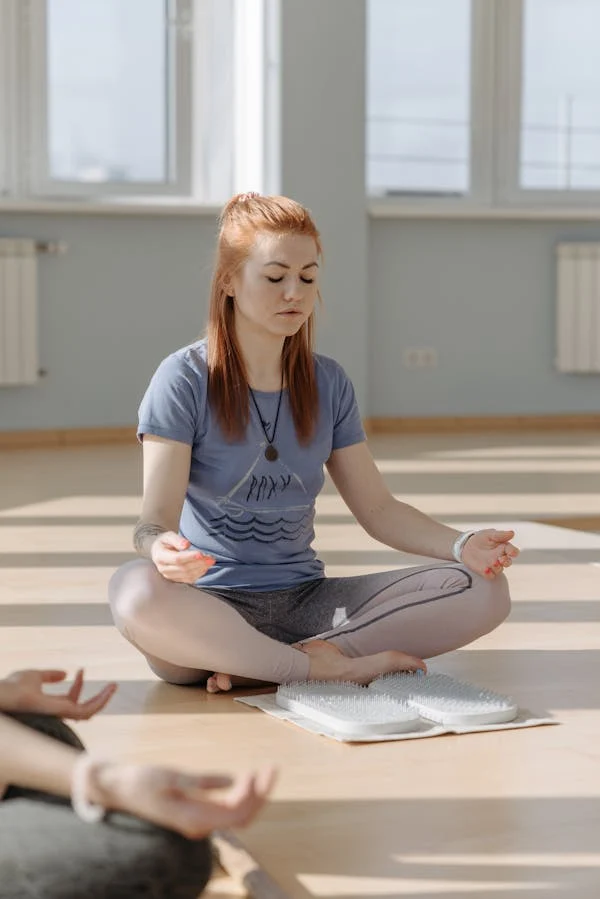
The Overlooked Path to Holistic Health
In a world dominated by visual and auditory stimuli, the full spectrum of our sensory experiences is often neglected. Yet, our five senses—sight, sound, touch, taste, and smell—hold the key to profound wellness. Each sense is a gateway, connecting us to the environment and to our inner selves.
Multisensory wellness involves harmonizing these senses to create a balanced state of physical, emotional, and mental well-being. It’s an approach rooted in both ancient traditions and modern science, offering untapped potential for those seeking holistic health.
What is Multisensory Wellness?
Multisensory wellness refers to practices and strategies designed to engage and harmonize all five senses. By stimulating each sense intentionally, you can foster deeper relaxation, heightened awareness, and overall balance.
Why It Matters
- Each sense plays a unique role in interpreting the world around us.
- Overstimulated or neglected senses can disrupt mental and physical equilibrium.
- Balanced sensory engagement promotes a harmonious connection between the mind, body, and environment.
The Science of Sensory Integration
Neural Pathways and Sensory Processing
- The brain processes sensory input through interconnected neural pathways, linking perception to emotion, memory, and decision-making.
- Stimulating multiple senses simultaneously enhances cognitive and emotional responses, improving overall well-being.
Sensory Overload vs. Sensory Deprivation
- Overload: Excessive stimuli (e.g., loud environments, constant screen time) can lead to stress, fatigue, and diminished focus.
- Deprivation: Lack of sensory input (e.g., dull surroundings, monotony) can cause emotional stagnation and reduced creativity.
Multisensory Stimulation and Neuroplasticity
- Engaging all senses activates neuroplasticity, the brain’s ability to adapt and reorganize itself.
- This promotes resilience, creativity, and enhanced mental clarity.
Exploring the Five Senses for Wellness
1. Sight: The Visual Spectrum of Wellness
- Role in Wellness: Visual stimuli influence mood, focus, and even physiological states.
- Tips for Optimization:
- Incorporate calming colors into your surroundings, such as greens and blues.
- Spend time observing natural landscapes to reduce stress and restore mental clarity.
- Use dim lighting in the evenings to support circadian rhythm.
2. Sound: Resonating with Harmony
- Role in Wellness: Sounds have a profound effect on emotions, concentration, and energy levels.
- Tips for Optimization:
- Listen to nature sounds or ambient music for relaxation.
- Practice sound therapy using instruments like singing bowls or tuning forks.
- Avoid jarring or high-decibel environments when seeking calm.
3. Touch: The Power of Tactile Connection
- Role in Wellness: Physical touch stimulates the release of oxytocin, promoting comfort and connection.
- Tips for Optimization:
- Explore different textures through soft fabrics, grounding exercises, or therapeutic massage.
- Practice self-massage techniques to release tension and improve circulation.
- Incorporate temperature variations, such as warm baths or cool compresses, to stimulate sensory balance.
4. Taste: Nutrition and Beyond
- Role in Wellness: Taste not only satisfies hunger but also evokes emotional and sensory pleasure.
- Tips for Optimization:
- Embrace mindful eating, focusing on flavors, textures, and aromas.
- Experiment with spices and herbs to stimulate the palate and support digestion.
- Avoid overly processed foods that dull sensory engagement.
5. Smell: The Invisible Influencer
- Role in Wellness: Aromas trigger the brain’s limbic system, influencing emotions and memory.
- Tips for Optimization:
- Use essential oils like lavender for relaxation or citrus for energy.
- Incorporate natural scents into your environment, such as fresh flowers or herbs.
- Engage in practices like aromatherapy to align emotional states with desired outcomes.
Integrating Multisensory Wellness into Daily Life
1. Create a Sensory Sanctuary
Design spaces that stimulate and soothe your senses:
- Visual: Use soft lighting and natural decor.
- Auditory: Play calming background music.
- Tactile: Include comfortable seating and cozy textures.
- Olfactory: Diffuse essential oils or place scented candles.
- Gustatory: Keep nourishing, flavorful snacks at hand.
2. Practice Sensory Awareness
Engage in activities that heighten sensory perception:
- Close your eyes while eating to focus on taste and texture.
- Take nature walks, paying attention to sights, sounds, and smells.
- Practice mindful breathing to connect with touch and sound sensations.
3. Time for Unplugging
Limit exposure to overstimulating environments:
- Set device-free hours to reduce visual and auditory clutter.
- Opt for quiet spaces to recharge your sensory system.
The Role of Multisensory Wellness in Stress Reduction
How It Works
- Stimulating multiple senses simultaneously helps shift focus from stress to the present moment.
- Engaging with calming stimuli lowers cortisol levels and promotes relaxation.
Practical Applications
- Breathing Exercises with Aromatherapy: Combine deep breathing with soothing scents.
- Immersive Nature Walks: Engage sight, sound, smell, and touch in natural settings.
- Mindful Movement Practices: Yoga or tai chi with calming music and pleasant lighting.
Myths About Multisensory Wellness
“It’s Just for Relaxation”
Truth: While relaxation is a benefit, multisensory practices also enhance focus, creativity, and resilience.
“All Senses Need Equal Attention”
Truth: Each individual may have dominant or neglected senses. Customizing your practices ensures better results.
“It’s Time-Consuming”
Truth: Many sensory practices, such as mindful breathing or nature immersion, require minimal time yet deliver profound benefits.
Unlocking the Full Potential of Your Senses
When all five senses are in harmony, they create a symphony of wellness that resonates throughout your life. By intentionally engaging your senses, you foster deeper connections with yourself and your environment.
Benefits of Multisensory Wellness
- Enhanced Emotional Regulation: Balanced sensory input promotes calmness and resilience.
- Improved Cognitive Function: Heightened sensory awareness sharpens focus and creativity.
- Physical Rejuvenation: Tactile and olfactory engagement supports physical relaxation and recovery.
The Path to Multisensory Balance
Multisensory wellness is more than a trend—it’s a transformative approach to holistic health. By aligning your senses with intention and care, you unlock deeper layers of well-being that transcend the physical and reach the emotional and spiritual realms.
Take the first step today by noticing the world through your senses. Each moment becomes an opportunity to connect, restore, and thrive. In the rhythm of your senses lies the harmony of wellness.
